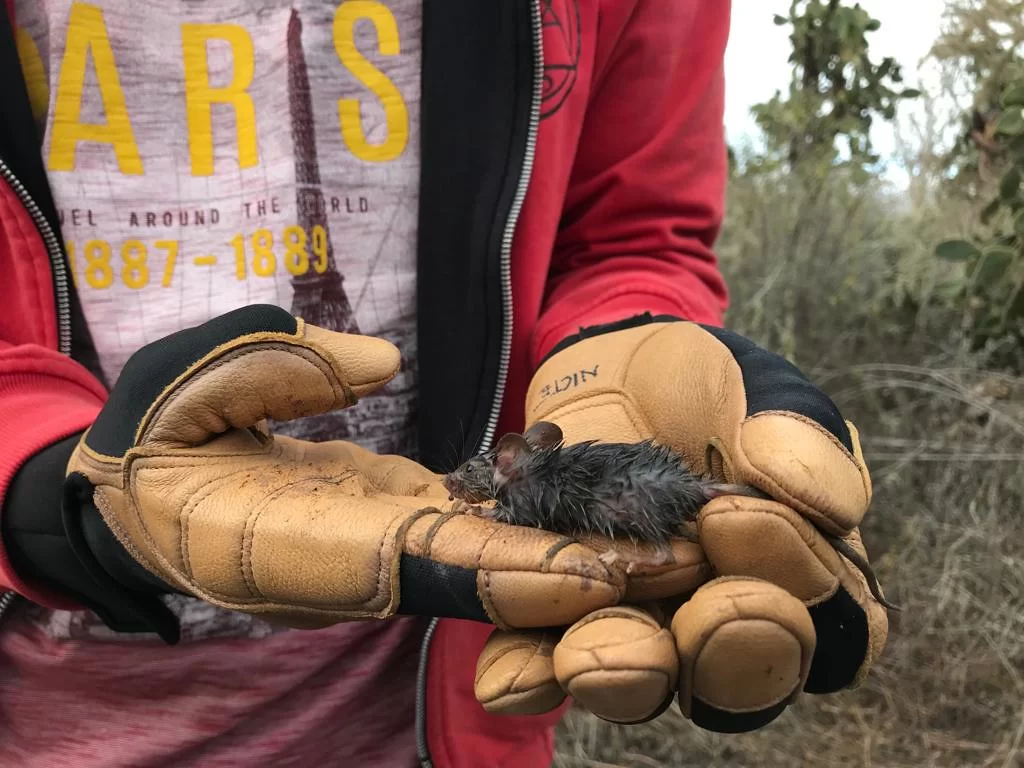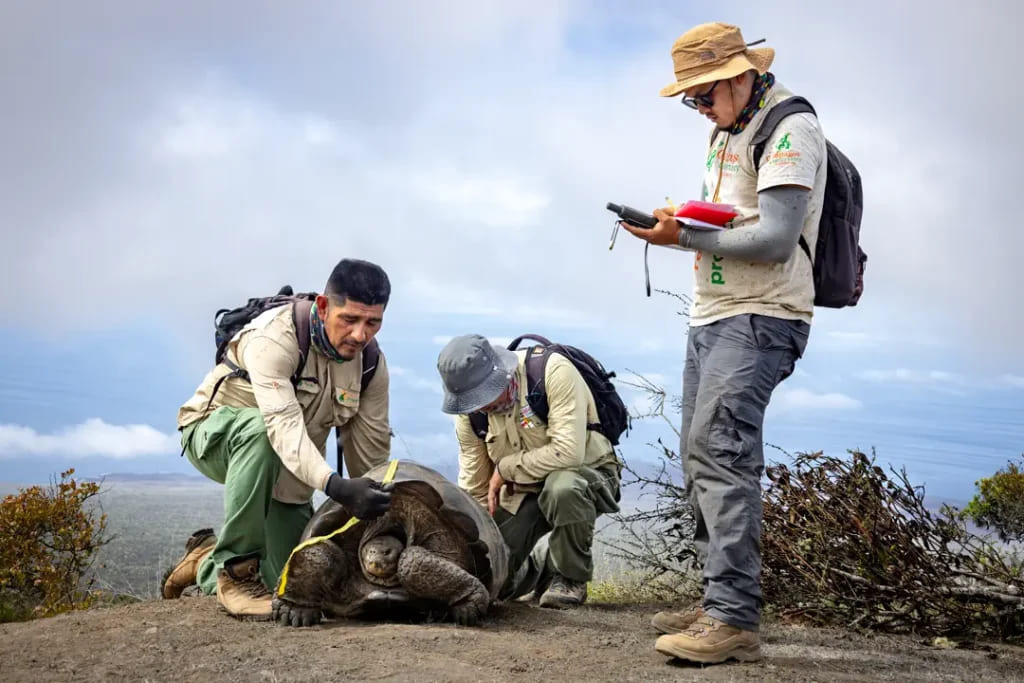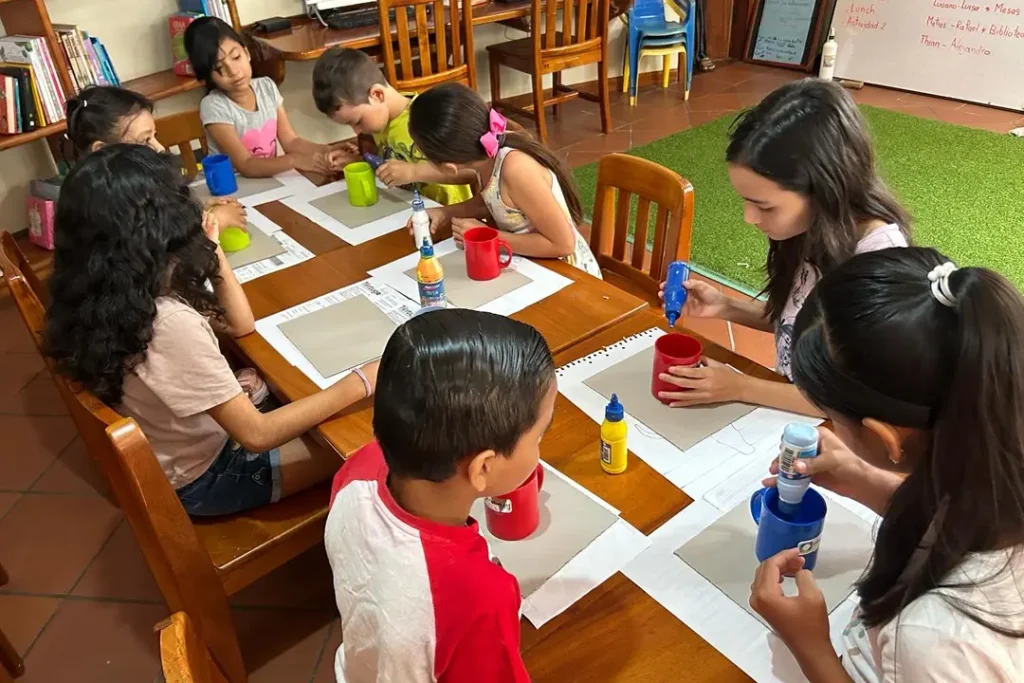There are three genera of rice rats from Galapagos: Nesoryzomys and Aegialomys. The latter is considered extinct. However, the Megaoryzomys evolved into 13 endemic species. Nine of these species are currently extinct and four are considered vulnerable (Weksler, Harris, and McDonald’s, 2007; Jimenez Uzcategui, et al. 2007). These species’ declines and extinctions are often due to the introduction exotic rodents (black rats, house mice), predators like the feral cats, diseases and climate change (Clark 1980, Harris, and McDonald’s 2007).
Johanna Castaneda set up sampling stations with Sherman and Tomahawk traps that were baited with peanut butter, oatmeal, and vanilla essence. She reported that most of the sampling was done in areas with prickly pear cacti. However, she also set up Santa Cruz Island sampling stations using Sherman traps and Tomahawk traps.
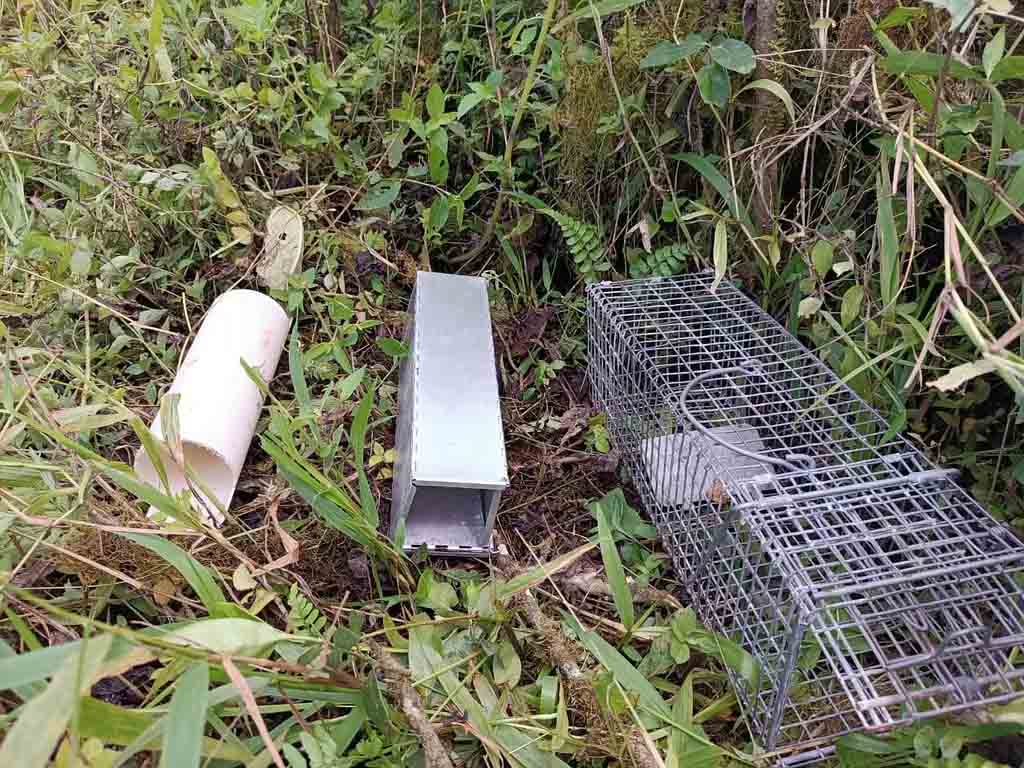
Rodent Traps © Johanna Castañeda
The research has shown that three introduced rodent species ( Rattus Rattus, Rattus Norvegicus, and Mus Musculus), coexist in Santa Cruz, San Cristobal. However, there is no evidence for the persistence of the endemic species.
Santiago Island’s endemic species are limited to the Prickly Pear and Palo Santo tree zones on the coast. (Harris 2006). The endemic species N., despite the presence of house mice and black rats, is not affected by them. The healthy body weight of swarthi was confirmed. The endemic species had a higher number of males than the introduced species. This could be due to N. Swarthi is more able to survive on the few resources available in their habitat during cold seasons.
Based on the data so far, it is recommended that Santa Cruz and San Cristobal have a more extensive survey. The N. It is also recommended that the swarthi population examines whether disease has been transmitted from introduced rodents. N. should be searched in greater depth. It is important to expand the search for N.
“This study is important because it redirects the attention to endemic rodents in Galapagos. They are an important group for maintaining balance in ecosystems. Johanna emphasized that Galapagos Conservancy is worthy of our gratitude for the trust we have placed in professionals in Galapagos to help us with this research on the endangered native rodents of the archipelago.”
Dr. Jorge Carrion is the Conservation Director at Galapagos Conservancy. He believes that research is an essential conservation tool. Having current information about Galapagos species status is vital for implementing management strategies. “That is why we are happy to support this type study conducted by Galapagos professionals,” said he.
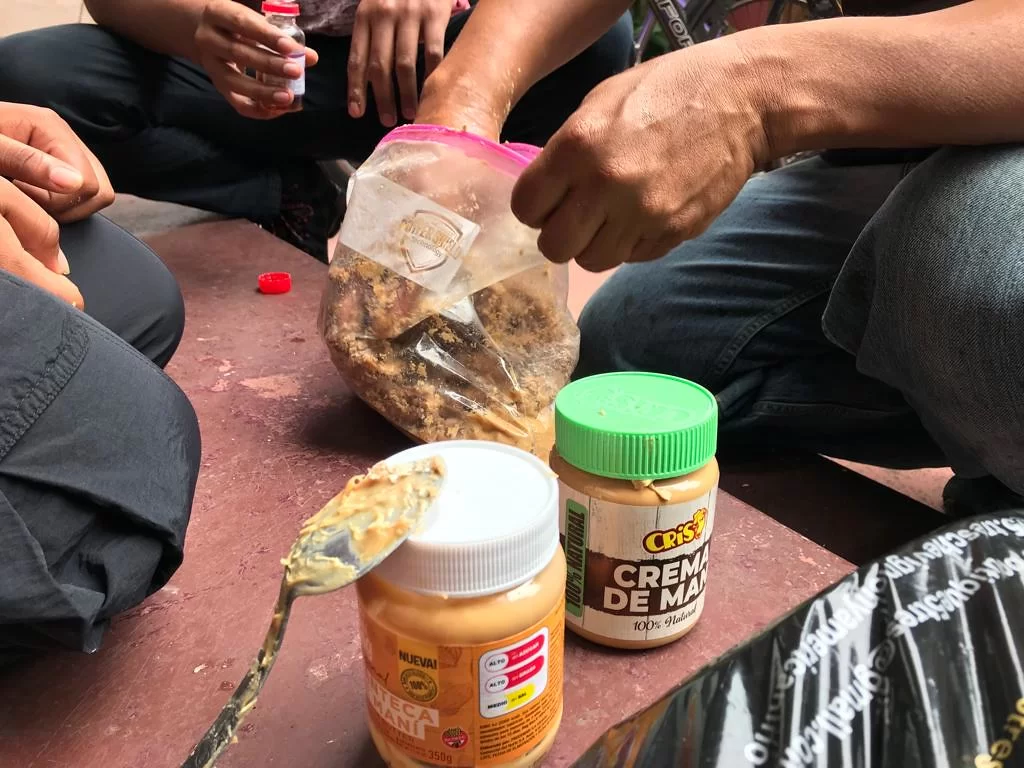
Preparation of Rodent Food © Johanna Castañeda
